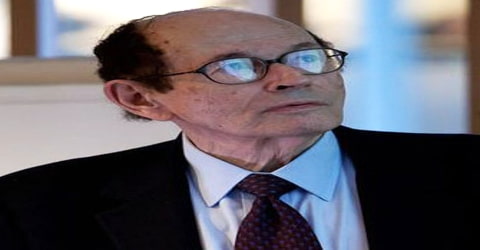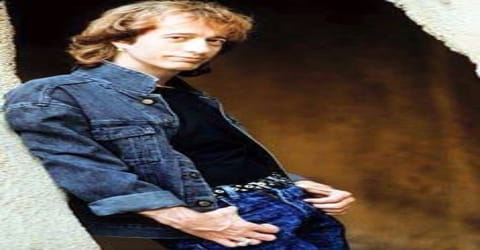Biography of Gerald Edelman
Gerald Edelman – American biologist.
Name: Gerald Maurice Edelman
Date of Birth: July 1, 1929
Place of Birth: Ozone Park, New York, United States
Date of Death: May 17, 2014 (aged 84)
Place of Death: La Jolla, California, United States
Occupation: Biologists
Father: Edward Edelman
Mother: Anna (née Freedman) Edelman
Spouse/Ex: Maxine M. Morrison (m. 1950)
Children: 3
Early Life
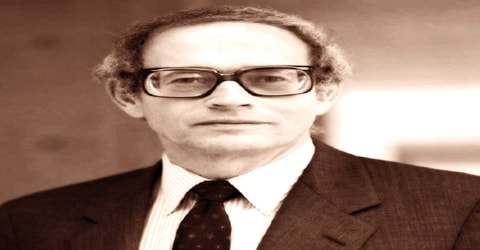
An American physician and physical chemist who elucidated the structure of antibodies proteins that are produced by the body in response to infection, Gerald Edelman was born in 1929 in Ozone Park, Queens, New York, to Jewish parents, physician Edward Edelman, and Anna (née Freedman) Edelman, who worked in the insurance industry. He shared the 1972 Nobel Prize in Physiology or Medicine for work with Rodney Robert Porter on the immune system. Edelman’s Nobel Prize-winning research concerned the discovery of the structure of antibody molecules.
Initially, Edelman wanted to be a concert vocalist; but later made up his mind to become a doctor. However, while working in U.S. Army Medical Corp in Paris he read a book about immunology, which sparked an interest in antibodies in him. So, he went back to America to join the Rockefeller Institute for his Ph.D. degree. He then worked on antibodies, which he found were made up of chains of amino acids held together by disulfide bonds. He made an exact replica of an antibody and explained how the body produces them in response to antigens. The work not only earned him the Nobel Prize but also opened the door for further investigations. Later, he started working on the primary cellular process and discovered cell adhesion molecules, which binds cells together to form tissues. He then began to work on how the brain gives rise to the mind and established the theory of Neuronal Group Selection, also known as ‘Neural Darwinism’. He also authored a number of books, in some of which he had also explained his ideas to the layman.
Edelman went on to achieve equal prominence for his pioneering theory of mind, referred to as “Neural Darwinism” or “Neuronal Group Selection” (NGS). While his conclusions about the fundamental workings of the human brain were often controversial, they were never dull. Edelman’s publications on the subject included Neural Darwinism: The Theory of Neuronal Group Selection, Bright Air, Brilliant Fire: On the Matter of the Mind, and Wider than the Sky: The Phenomenal Gift of Consciousness. He founded the Neurosciences Institute in New York City in 1981, and moved it to La Jolla, California, in 1993.
Childhood, Family and Educational Life
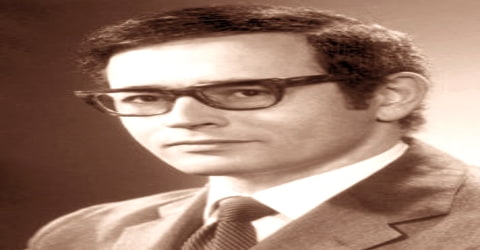
Gerald Edelman, in full Gerald Maurice Edelman (/ˈɛdəlmən/), was born on July 1, 1929, in Ozone Park, New York City. His father, Edward Edelman, was a practicing physician while his mother, Anna (née Freedman) Edelman, was employed in the insurance industry.
Edelman studied violin for years but eventually realized that he did not have the inner drive needed to pursue a career as a concert violinist, and decided to go into medical research instead. He attended public schools in New York, graduating from John Adams High School, and going on to college in Pennsylvania where he graduated magna cum laude with a B.S. from Ursinus College in 1950 and received an M.D. from the University of Pennsylvania School of Medicine in 1954.
In 1955, Edelman completed his internship at Johnson Foundation for Medical Physics and joined Massachusetts General Hospital as a medical house officer. Later in the same year, he joined the U.S. Army Medical Corps as a captain, and for two years, practiced general medicine at a military hospital in Paris. His interest in antibodies was ignited during this period and he decided to investigate more into it. Therefore, on returning home in 1957, he joined the Rockefeller Institute for Medical Research as a graduate fellow. Here he explored the ways of splitting immunoglobulin molecules under Henry Kunkel, ultimately receiving a Ph.D. in 1960.
Personal Life
Gerald Maurice Edelman married Maxine M. Morrison in 1950. They have two sons, Eric, a visual artist in New York City, and David, an adjunct professor of neuroscience at the University of San Diego. Their daughter, Judith Edelman, is a bluegrass musician, recording artist, and writer. Some observers have noted that a character in Richard Powers’ The Echo Maker may be a nod at Edelman.
Career and Works
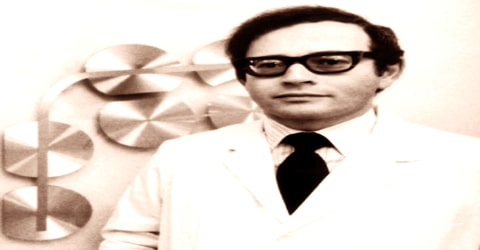
In 1960, Gerald Edelman was appointed as Assistant Dean of Graduate Studies at the Rockefeller Institute for Medical Research. In 1963, he was promoted to the post of Associate Dean of Graduate Studies and then from 1966 to 1992, he served as a full professor at the same Institute. At this time, not much was known about the chemical structure of antibodies. Although by then, it was established that they combated antigens, it was not clear how they recognized them. While working at Rockefeller Institute Edelman began his research on that. He realized that antibodies were made up of two light and two heavy amino acid chains, linked together by disulfide bonds.
By 1969 Edelman and his team at Rockefeller had succeeded in creating a precise model of an antibody molecule, which was made up of a four-amino-acid-chain (two light and two heavy chains) structure comprised of more than 1,300 amino acids. This enabled the team to identify exact locations of antigenic binding. Edelman’s group had just narrowly beaten Porter’s in achieving such a goal, and both researchers were awarded the Nobel Prize in Physiology or Medicine in 1972 for their efforts. Their work had many far-reaching effects in medical therapy, including preventing organ rejection in transplant situations. But Edelman, just 43 years old at the time, had even more to offer the world of science.
In 1957, Edelman joined the Rockefeller Institute for Medical Research as a graduate fellow, working in the laboratory of Henry Kunkel and receiving a Ph.D. in 1960. The institute made him the Assistant (later Associate) Dean of Graduate Studies; he became a professor at the school in 1966. In 1992, he moved to California and became a professor of neurobiology at The Scripps Research Institute.
In 1975 Edelman discovered substances called cell adhesion molecules (CAMs), which “glue” cells together to form tissues. Edelman found that, as the brain develops, CAMs bind neurons together to form the brain’s basic circuitry. His work led to the construction of a general theory of brain development and function called neuronal group selection, which he explained in a trilogy of books (1987-89) for a scientific audience and in Bright Air, Brilliant Fire: On the Matter of the Mind (1992) for laypersons. He also wrote Wider than the Sky: The Phenomenal Gift of Consciousness (2004) and Second Nature: Brain Science and Human Knowledge (2006).
In 1981, Edelman founded Neurosciences Institute under Rockefeller University and became its founder director. Here he continued working on the brain and in 1987, he enlarged his theory, publishing it under the title of ‘Neural Darwinism: The Theory of Neuronal Group Selection’. Although his theory was criticized by many contemporary scientists, he did not give up. Subsequently, he wrote two more books to establish his hypothesis; i.e. ‘Topobiology: An Introduction to Molecular Embryology’ (1988) and ‘The Remembered Present: A Biological Theory of Consciousness’ (1989).
Neural Darwinism, or Neuronal Group Selection (NGS), was first presented in Edelman’s 1987 book Neural Darwinism: The Theory of Neuronal Group Selection. The idea is described in his biography on the Cajal Conference website (citation below) as: “the theory that populations of neurons develop individual networks through a Darwinian selection process. Edelman thinks that the converse opinion, that neurons are genetically coded to make specific connections, just as transistors are wired in a preset pattern, is untenable given the very limited size of eukaryotic genomes in relation with the explosive number of neuronal connections.” Further, Edelman argued against the traditional concept of a fixed human nervous system, suggesting instead that neural systems continuously change. That is, the human brain has variations unique to each individual and modifies itself constantly in response to each new incoming signal.
The foregoing explanation is, necessarily, an extremely simplified and streamlined definition of a multi-faceted and complicated theory. Indeed, some of its controversies stemmed from its very complexity. Edward Rothstein of the New York Times quoted the 1988 comment of biologist Gunter Stent on NGS as “I consider myself not too dumb. I am a professor of molecular biology and chairman of the neurobiology section of the National Academy of Sciences, so I should understand it. But I don’t.” Other critics found the theory either derivative or based on incorrect interpretations of other models of the mind. But Edelman ignored the naysayers and quietly continued his pioneering work.
Later, Edelman wrote a number of books explaining his ideas to general readers. They include ‘Bright Air, Brilliant Fire’ (1992), ‘A Universe of Consciousness’ (2001, with Giulio Tononi), ‘Wider than the Sky’ (2004) and ‘Second Nature: Brain Science and Human Knowledge’ (2007).
From 1981 Edelman served as director of the Neurosciences Institute, which he founded at Rockefeller University. In 1993 he moved the institute to the La Jolla neighborhood of San Diego. From 1995 the institute was part of the Scripps Research Institute campus; it moved to another location in La Jolla in 2012. Edelman also formed and chaired (1992) the neurobiology department of the Scripps Research Institute and was a member (from 1996) of the Skaggs Institute for Chemical Biology at Scripps.
By 2005 Edelman had added other responsibilities to his resume besides heading up the Neurosciences Institute. Those included serving as chairman and professor of neurobiology at the Scripps Research Institute, scientific chairman of the Neurosciences Research Program, and president of the Neurosciences Research Foundation. His institute was thriving on its own campus in La Jolla, with 36 research fellows studying nearly every field of neuroscience. Each fellow was fully funded by the Institute for up to four years, in order to insulate him or her from the vagaries and distractions of grant writing and laboratory politics, as Edelman felt such independence was necessary for proper original research. And the institute itself was an interesting reflection of its founder: one building devoted to theory, another to experimentation, and a third (a concert hall) to music.

Edelman served on the scientific board of the World Knowledge Dialogue project. He was a member of the USA Science and Engineering Festival’s Advisory Board.
While Edelman was trying to recreate the structure of the antibody at Rockefeller Institute, English biochemist Rodney R. Porter was also working on the same subject separately in England. Ultimately Edelman’s team was able to beat the English team at a narrow margin. However, the Nobel Foundation recognized both the works and awarded both of them for their achievements.
Awards and Honor
In 1954 Gerald Edelman received the Spencer Morris Award from the University of Pennsylvania; in 1965, the Eli Lilly Award in Biological Chemistry of American Chemical Society; and in 1969, the Annual Alumni Award from Ursinus College.
In 1972, Gerald Edelman received the Nobel Prize in Physiology or Medicine for his discovery “concerning the chemical structure of antibodies”. He shared this prize with English biochemist Rodney R. Porter, who worked on it separately in England.
Edelman was the first Felton Bequest Visiting Professor at the Walter and Eliza Hall Institute for Medical Research in Melbourne, Australia, in 1972, and became a Vincent Astor Distinguished Professor at Rockefeller University in 1974. Other awards included the Albert Einstein Commemorative Award, the Buchman Memorial Award from the California Institute of Technology, and the Rabbi Shai Schaknai Memorial Prize. And he held memberships in numerous professional and scientific societies. He was one of the few international members of the Academy of Sciences, Institute of France.
Death and Legacy
Later in his life, Gerald Maurice Edelman had prostate cancer and Parkinson’s disease. Edelman died on May 17, 2014, in La Jolla, California, aged 84.
Edelman is best remembered for his research on molecular immunology. He hypothesized that antibodies consisted of multiple amino acid chains held together by disulfide bonds. He dissolved these bonds and separated the antibodies in order to identify their components.
Subsequently, he found that antibodies were made up of two heavy and two light chains consisting of 1300 amino acids. Next he located the antigen-binding (variable) regions and effector function-conferring (constant) regions. Finally, he produced the exact replica of an antibody. He also established that all antibodies have the same basic structure. When different antigens attack our body, it produces diverse materials, generated in the combination of various gene segments. The right antibody, selected from these materials, quickly multiplies to form the immune system. This discovery provided a great insight into the structure and functions of antibodies. It also opened the door for further studies, which in turn had a far-reaching effect on medical science.
Despite the controversy surrounding his theories, and perhaps even because of it, Edelman was indisputably one of the preeminent neuroscientists of his time. His advocates found his ideas breathtaking. His adversaries rarely dismissed him out of hand. And the potential impact of his ideas, whatever one felt about them, was enormous. As Rothstein wrote, “(Edelman’s) vision can also spur discomfort, because it implies that there is no supervising soul or self nobody is standing behind the curtain. This, for Dr. Edelman, is Darwin’s final burden.”
Information Source:
